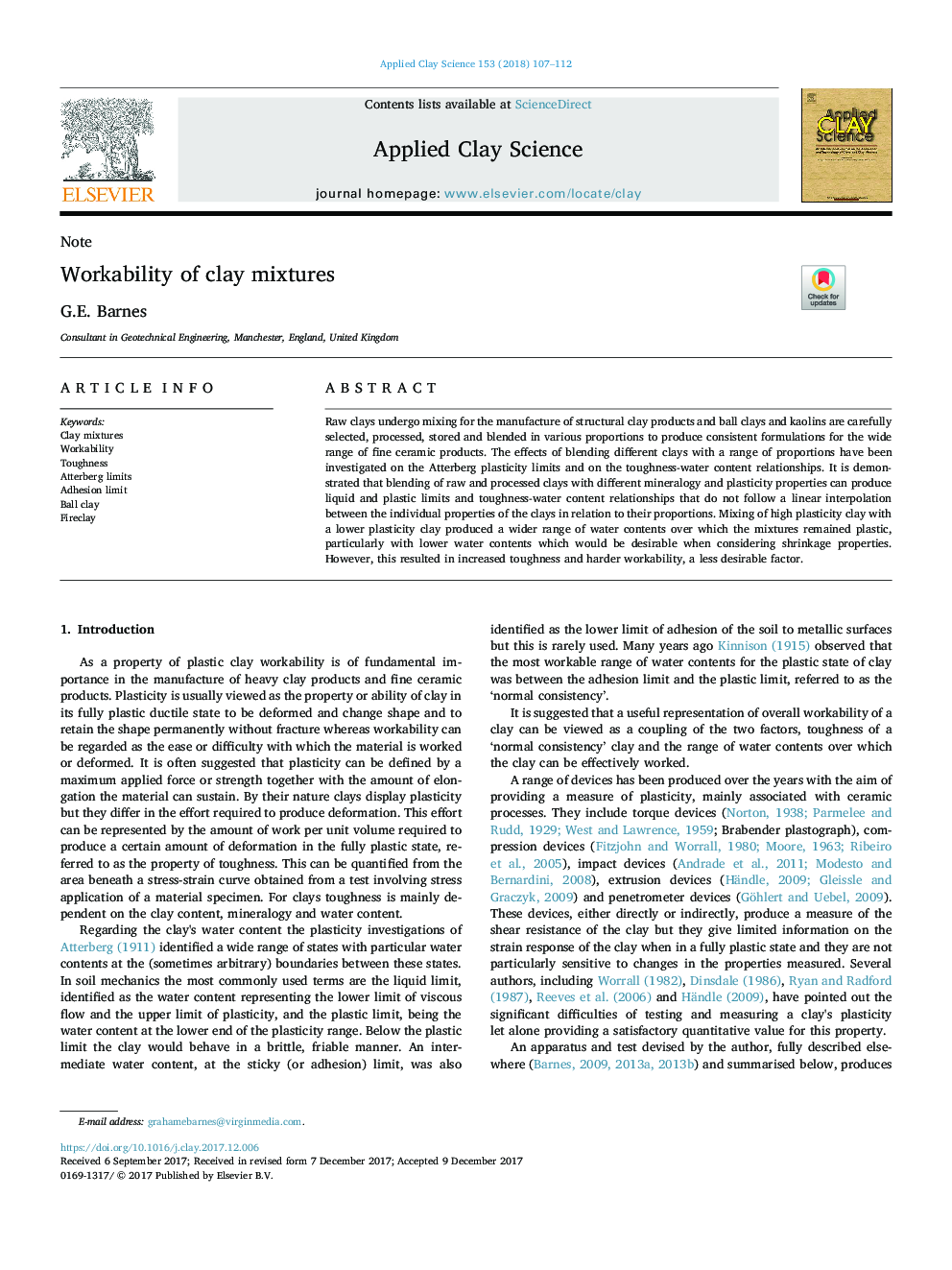| Article ID | Journal | Published Year | Pages | File Type |
|---|---|---|---|---|
| 8046264 | Applied Clay Science | 2018 | 6 Pages |
Abstract
Raw clays undergo mixing for the manufacture of structural clay products and ball clays and kaolins are carefully selected, processed, stored and blended in various proportions to produce consistent formulations for the wide range of fine ceramic products. The effects of blending different clays with a range of proportions have been investigated on the Atterberg plasticity limits and on the toughness-water content relationships. It is demonstrated that blending of raw and processed clays with different mineralogy and plasticity properties can produce liquid and plastic limits and toughness-water content relationships that do not follow a linear interpolation between the individual properties of the clays in relation to their proportions. Mixing of high plasticity clay with a lower plasticity clay produced a wider range of water contents over which the mixtures remained plastic, particularly with lower water contents which would be desirable when considering shrinkage properties. However, this resulted in increased toughness and harder workability, a less desirable factor.
Related Topics
Physical Sciences and Engineering
Earth and Planetary Sciences
Geochemistry and Petrology
Authors
G.E. Barnes,
